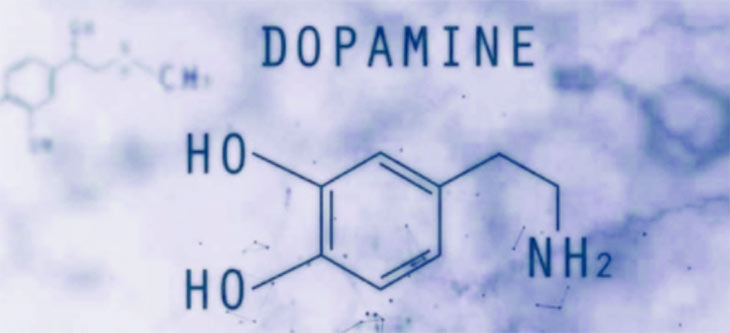How are Companies Manipulating our Brain Chemicals
It turns out it’s all about dopamine.
Our brains are hard-wired to work towards things we desire. When we think of something we want or need, our brains release a chemical called dopamine that spurs us on to get that thing. It was a great idea in prehistoric times to keep us fed, sheltered, and reproducing but it’s taken a sinister turn in the modern era.

Simple yet so nice
Now with the advent of online shopping, gambling, on-demand sex and drugs, 24-hour everything, fast food, and literally anything else that you can quickly buy, discover, or download on the internet, this chemically-activated urge is more powerful than ever… and not necessarily helping us in the “survival” department.
The scary part is that companies have really picked up on this and leveraged the power that it has over human beings to increase profits, keep us wanting more, and creating a feedback loop of neural circuitry that is as devious as it is brilliant.
What is Dopamine?
Dopamine, first discovered in 1957, is one of 20 or so major neurotransmitters, a fleet of chemicals in the brain that are released to send signals to nerves, neurons, and other cells in the body.
Dopamine is largely associated with desire, addiction, ambition, and sex drive. It causes us to seek reward but not to reward us, also causing frustration and anxiety. Marketers use this feature best when they tell us that the deal won’t last long or that supplies are limited.
People even get dopamine tattoos, a tip of the hat to this neurotransmitter that controls so much of our behaviour and lives.
This evolutionary survival mechanism that worked so effectively for our primal ancestors, has unfortunately found its way into our modern-day lives too.
Neuromarketing
No other field of inquiry sees the exploitation of dopamine more than the burgeoning realm of neuromarketing, or consumer neuroscience. It’s basically the study of the brain with the goal of predicting or even manipulating consumer behaviour.
Interest in neuromarketing started in the early 2000s when graduate student researchers began to show significant connections between branding, advertising, and other marketing tactics and consumer decision-making. Their findings showed measurable impacts on the brain from the bombardment of dopamine by means of various stimuli.
The promise of reward, whether monetary, sexual, indulgence, or status triggers an immediate release of dopamine to the brain. These stimuli propel us to desire something that we may not desire of our own accord. This confusion of reactions in our brains causes us to buy, do, or otherwise crave a product or activity that we may not have had any prior interest in.
Social Media & the Internet
There is no better example of the powerful effects of dopamine than in the online world of social media and the internet. The founding president of Facebook, Sean Parker, has even said that this is not by accident — but rather by design.
He admitted that the social network was founded not to unite us, but to distract us with that little hit of dopamine every time we get a like or comment on a post that keeps us coming back for more. It’s the same principle that addicts people to drugs, except in this form, it is a social-validation feedback loop, a blatant exploitation of human psychology.
Examples abound of people being glued to their smartphones, checking, rechecking, and triple-checking their social media accounts, sitting glued to YouTube for hours, or blowing up their Instagram with photos to get that all-important “Like”.
Games & Music
The gamification of activities such as loyalty programs is a hugely dopamine-driven method for encouraging consumer participation. The McDonald’s Monopoly Game or the Starbucks for Life reward program are great examples of this working extremely well and creating a drone-like consumer following, each one hell-bent on collecting the most game pieces or stars.
Catchy slogans or, when put to music, jingles have long been used to remind us of products every time we hear them. The addictive music used in online casino slot machines, video games, and keno machines reminds us of something that gave us pleasure in the past. In turn, our brains release the all-important dopamine, which triggers inspiration to pursue that desire once again.
Food
Over time and with more “hits” of dopamine to the brain, the neurons start to become less responsive to familiar rewards. For example, eating an amazing steak and lobster dinner would be great the first few times… but what about the 74th time in a row?
This is why dopamine-savvy companies are constantly changing their food menus, adding new items all the time (with the same manipulative marketing) to keep our receptors coming back for more.
It’s not only something you can see in marketing either. If we stick with the Starbucks and McDonald’s examples, we get a glimpse of food that is manufactured with the perfect combination of salt, sugar, and fat to increase our dopamine production and make us crave the “reward” almost irrationally.
These ingredients (and chemical additives) combine to create engineered food that hits every pressure point in our brains, literally hijacking our mental circuitry until we get what we’re craving.
A Vicious Cycle
Dopamine fuels addiction and keeps us coming back for more even when we’re not actually happy with the outcome of our purchase, actions, or meal.
The downside of dopamine is that although we feel really good when we’re engaging in the reward-seeking behavior, the feeling is gone when we’ve accomplished our goal.
Over time the dopamine receptors in our brain become less sensitive and we build up a tolerance that only ever-higher levels of dopamine can affect. Like a potent drug, we keep going back time and again to try to experience that same satisfying “high” as the first time.
































































































